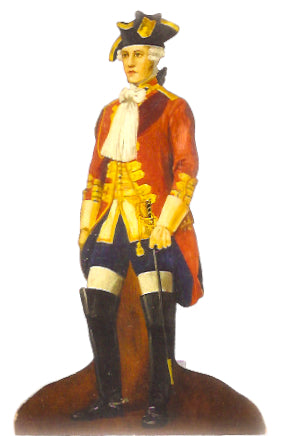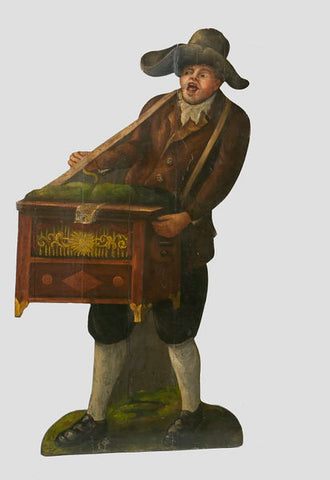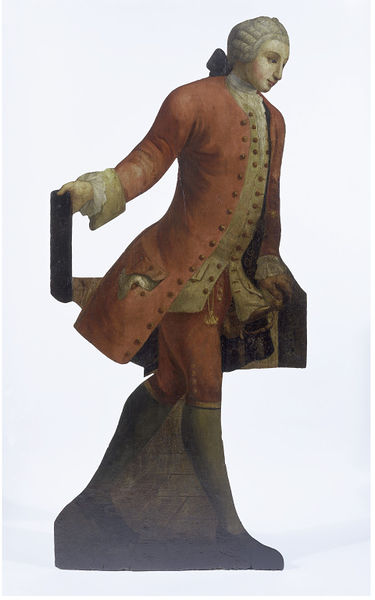The Mystery of Dummy Boards
Share

Early 18th century Dummy Board from Christopher Gibbs' The Manor House, Clifton Hampden, Oxfordshire, Christie's House Sale, 2000
If you enjoy visiting Country Houses, now and again you'll have probably come across the odd Dummy Board. "Dummy Boards" are flat, oil painted figures in trompe l'oeil- often life-sized (sometimes smaller), which were placed around the house: in halls, corridors, by fireplaces and on staircases. According to the Victoria & Albert Museum they originated in the early 17th century and were popular until the 19th century, when they fell out of fashion. "The figures were painted and shaped in outline to resemble figures of servants, soldiers, children and animals."
The edges of the boards were chamfered to increase the illusion. Reading up on dummy boards, I get the impression that today, we really don't have a full understanding of what they were used for. One theory is that they were an amusing form of practical joke. Another, which I think a bit silly, is that they were used as an early form of burglar alarm, to give the impression that a house was occupied when it wasn't. I'm taking that one with a pinch of salt. Getting inside the seventeenth or eighteenth century mind can be difficult. Sometimes, I think that in the modern age, we desperately need a 'reason' for anything or anything. I suspect that dummy boards were really no more than fashionable, whimsical diversions in an age very different to our own.

Dummy boards come up at auction from time to time, and I suspect that many of them are actually nineteenth century, or even later. I liked this splendid 'eighteenth century' chevalier (above) which came up for sale at Bonhams relatively recently. Very sensibly they catalogued it as Edwardian- which I am sure it is; it has a chocolate box quality about it, doesn't it? And I suspect that many so-called "dummy boards" are actually some form of shop sign. In the way that tobacconists used to place three-dimensonal figures of American Indians and Scottish footsoliders- in kilts- outside their shops.
If you're interested in finding out more, I've had a quick scout on the net, and sadly, there are hardly any books available on the subject. Claire Graham's Dummy Boards and Chimney Boards looks helpful, and Amoret and Christopher Scott's "Dummy Board Figures", first published in 1966, would be an essential addition to your antiques reference library- if you can find a copy.

Street Guitar Player, circa 1780 (V & A Museum, London)

Street Barrel-Organist, circa 1780 (V & A Museum, London)

Eighteenth Century Gentleman (V & A Museum, London)

Greedy Pig Feeding From a Bowl, 1750-1800 (V & A Museum, London)
4 comments
Hi—do you have a contact for Clare Graham? I’d love to get in contact with her. Thanks, Jonathan
Hi Sherry
Thanks for leaving a comment. Lucky you!
Drop me a line by email and I should be able to point you in the right direction,
Best wishes,
Luke
Hi….loved your dummy boards. I have a pair the V&A says are probably late 17th or early 18th century. A Dutch couple, they are 5’ tall and very beautiful….they look like something Vermeer would paint. I’d like your thoughts on how to sell them? Thank you very much. Shery in Texas
When I was lord of the manor, many years ago, I had dummy boards, also a lovely tall folly to impress my guests. Now I’m a ghost I have to while away the hours on the internet. Lucky Steve Jobs is here now, he gave me this ipad.